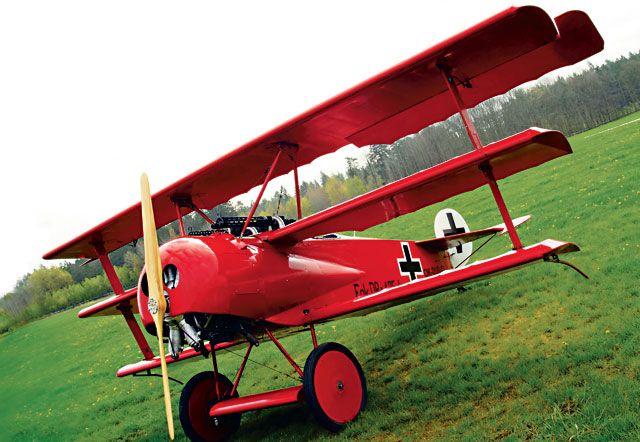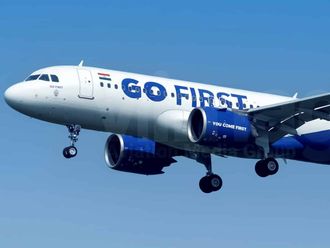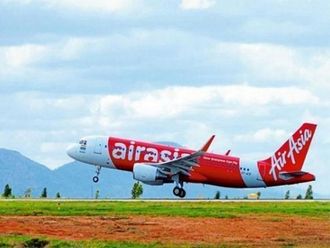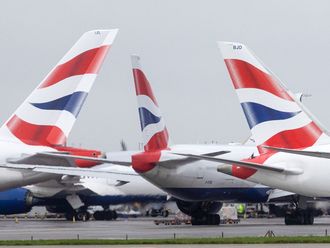A special centenary in aviation history will be marked next year. In 1910 Henri-Marie Coandã, a Romanian inventor and aeronautical engineer, designed, built and piloted the first jet-powered aircraft, known as the Coandã-1910. This feat came less than a decade after the Wright brothers made the first successful flight of a piloted aircraft, and more than 30 years before jet engines became standard in modern flight.
Coandã was born on June 7, 1886, in Bucharest, Romania. His parents, General Constantin Coandã and Aida Danet, were aristocrats whose ancestors emigrated from France. He began school in Romania, and later moved with his family to France, where it has been noted that he studied sculpture under Auguste Rodin.
Passion for technology
At the bidding of his father, Coandã received a military education, but his passion was technology and in particular aerodynamics. He graduated from the Military Academy in Iasi as a sergeant major and continued his studies at the Technische Hochschule in Berlin, Germany, graduating as an artillery officer. In 1905, while an artillery officer in the Romanian army, he built a missile-aeroplane.
Having obtained permission to leave the army, Coandã attended the Ecole Nationale Superieure d'Ingenieurs en Construction Aeronautique in France. Under the tutelage of the famous engineer Gustave Eiffel and aeronautical pioneer Paul Painleve, Coandã began experimenting with different aerodynamic techniques. One experiment, using a wind tunnel with smoke and an aerodynamical balance to profile wings to be used in designing aircraft, later led to his discovery of the aerodynamic effect now known as the Coandã Effect.
In 1910, Coandã graduated at the top of his class of aeronautical engineers and went on to design the Coandã-1910 as part of a display for the second International Aeronautic Salon in Paris.
The flight of the Coandã-1910 occurred after the exhibition at Issy-les-Moulineaux and did not go quite the way Coandã would have liked. According to LeRoy Weber, Jr., a member of the Academy of Model Aeronautics, who studied the Coandã-1910, and eventually met and spoke with Coandã, Coandã was not supposed to be the pilot.
"When the plane was ready to fly, Coandã was in the cockpit preparing to start the engine. The wheels were chocked. The engine started. Flames flowed back into Coandã's face. Coandã tried to shut off the engine. The plane jumped the chocks and headed for the city wall of Paris. He tried to control the plane. It lifted. It stalled. It crashed." Coandã was thrown from the plane with mild injuries, perhaps more the result of a damaged ego than from bodily harm. Especially when his father, who had largely financed the project, announced, "You have had your fun, now go to work."
Hardly encouraged after such an historic achievement, Coandã abandoned his jet engine experiments. He left for the United Kingdom to work with the Bristol Aeroplane Company, crafting various models of propeller aeroplanes.
Coandã-1910
The Coandã-1910 was a revolutionary aircraft in many ways. According to the Aeronautics Learning Laboratory for Science, Technology and Research, it was the first aircraft to fly without a propeller. The wings were innovative in that they were made with steel leading edges instead of wood and featured movable slats on the forward wing edge to increase lift.
The design of the two wings was innovative in that they were different lengths — the upper wing was set ahead of the lower wing, which was shorter in order to reduce the aerodynamic interference between the two surfaces. This feature was later applied in Fokker, Brequet, and Poetz aircraft. Another innovative feature was that gasoline and oil were stored in the upper wing, thus reducing the fuselage size and thus drag.
The jet engine was the real innovation, and many believe that it was a great loss that Coandã was not able to further pursue its development. Coandã's engine is termed a "motorjet," a rudimentary piston engine (hence, the term motor) that drives a compressor, which forces air into a combustion chamber, where fuel is injected and ignited. High temperatures cause the gases in the chamber to expand and escape at high pressure from the exhaust, creating force that drives the engine.
Motorjet research was nearly abandoned at the end of the Second World War as the "turbojet" was a more practical solution to jet power as it used the jet exhaust to drive a gas turbine, providing the power to drive the compressor without the additional weight of a piston engine that generated no thrust. The type of jet engine that most modern aircraft use and most air travellers know and appreciate is the turbojet.
Coandã Effect
Coandã became most famous for his discovery of what came to be known as the "Coandã Effect" in 1932. The Coandã Effect is a principle that explains why air or other fluids when directed over a curved surface tend to cling to the surface and follow its contour. The simplest way to show this is to put a spoon under a running tap and observe the way the water spreads out over the curved side of the spoon, as opposed to flowing in a direct stream.
Coandã believed that if air was blasted at high speedover a rounded body, some of the air in the atmosphere could be induced to hug the edge of the body creating a vacuum above the rounded body and normal atmospheric pressure beneath it would lift it upward. The Coandã Effect gave rise to his exploration and attempts at crafting history's first flying saucer. Coandã himself has been quoted as early as 1909 saying, "I have wantedto go forward in a different direction... the only future in the airis the flying saucer."
The Avrocar, a United States military project that resembled a flying saucer, used the Coandã Effect. Other achievements that use or have exploited the Coandã Effect are planes that can take off and land vertically or with very little runway; the Boeing C-17 Globemaster III; NOTAR (NO TAil Rotor) helicopter anti-torque system; inclined hydropower screens — which separate debris, fish, etc., otherwise in the input flow to the turbines; automotive windshield washers; and air conditioners. The Coandã Effect also explains certain cardiovascular and meteorological phenomena.
Coandã died in Bucharest on November 25, 1972, at the age of 86. Bucharest's Henri Coandã International Airport is namedin his honour.
A dogged innovator, the likes of whom are seldom seen in modern society, Coandã also delved into prefabricated housing developments, water conversion and conservation, energy conservation and agricultural equipment. In his lifetime, he contributed some 250 inventions to these diverse fields.
A replica of the Coandã-1910 is on display in the foyer of theMusee de l'Air et de l'Espace (Air and Space Museum)at Le Bourget airport outside Paris.













